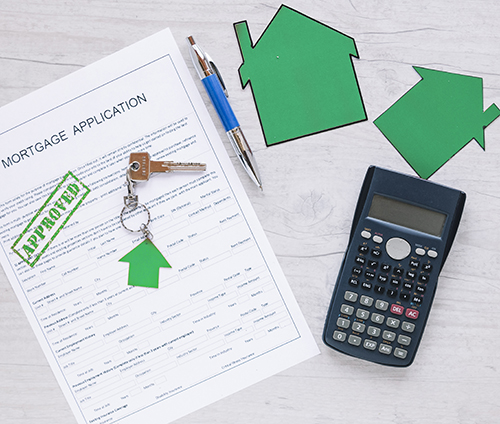Services Details

SERVICE
BUY TO LET
A buy-to-let mortgage is a type of mortgage loan specifically designed for individuals who want to purchase a property with the intention of renting it out to tenants rather than living in it themselves. In other words, it is a mortgage product for those looking to invest in real estate for rental income and potential capital appreciation.

BUY TO LET
Eligibility and lending criteria
Eligibility criteria and lending requirements for buy-to-let mortgages can vary among lenders, but here are some common factors that lenders typically consider when assessing applicants for buy-to-let loans :
-
Deposit :
Lenders often require a larger deposit for buy-to-let mortgages compared to residential mortgages. The deposit can range from 15% to 25% or more of the property's value.
-
Rental Income :
One of the key factors lenders assess is the potential rental income of the property. The rental income is typically expected to cover a certain percentage of the mortgage repayments. Lenders may have a specific rental coverage ratio, such as requiring the rental income to be 145% or more of the mortgage payment, In other words, if your monthly mortgage payment is £1,000, the monthly rent should be a minimum of £1450
-
Affordability :
While rental income is crucial, lenders also consider the borrower's own financial situation to ensure they can cover the mortgage payments if the property is vacant or if rental income falls short. They may assess the borrower's income, credit history, and existing financial commitments.
-
Property Type :
Lenders may have preferences or restrictions regarding the type of property they are willing to finance. For example, some lenders may be more selective when it comes to studio apartments or certain commercial properties.
-
Experience as a Landlord :
Some lenders prefer borrowers who have experience as landlords, especially if they are investing in multiple properties. However, first-time landlords can still secure buy-to-let mortgages.
-
Age Restrictions :
Some lenders may have age restrictions on buy-to-let mortgages, requiring borrowers to be within a certain age range when the mortgage term ends.
-
Interest Rate Type :
Lenders offer buy-to-let mortgages with both fixed and variable interest rates. The choice between the two may depend on the borrower's preference and risk tolerance.
-
Maximum Loan Amount :
Lenders often have maximum loan amounts for buy-to-let mortgages, which may be based on factors like the property's value, the borrower's income, and the deposit amount.
-
Purpose of the Loan :
Buy-to-let mortgages are intended for investment purposes only. Lenders will want assurance that the property will be rented out rather than used as the borrower's primary residence.
It's important for potential borrowers to shop around and compare offerings from different lenders, as eligibility criteria can vary. Consulting with a mortgage advisor or broker can also provide valuable insights into the specific requirements of different lenders and help navigate the application process.

BUY TO LET
Buy-to-let mortgages - associated fees and costs
When considering a buy-to-let mortgage, it's crucial to be aware of the various fees and costs associated with the process. Here are some common fees and costs you may encounter :
-
Arrangement Fee :
This is a one-time fee charged by the lender for setting up the mortgage. It can be a flat fee or a percentage of the loan amount. Some lenders may offer mortgages with no arrangement fees, but others may charge a significant amount.
-
Booking Fee :
Some lenders require a booking fee to secure the mortgage deal. This fee is usually paid upfront and is separate from the arrangement fee.
-
Valuation Fee :
Lenders typically require a valuation of the property to assess its market value. While some lenders offer free basic valuations, others may charge a valuation fee. If you want a more detailed survey, you may need to pay extra.
-
Legal Fees :
You'll need a solicitor or conveyancer to handle the legal aspects of the property purchase. Legal fees cover tasks such as property searches, land registry fees, and preparing and reviewing contracts.
-
Stamp Duty Land Tax (SDLT) :
In some countries, you may be required to pay stamp duty or a similar tax on property purchases. The amount depends on the property's value and local regulations.
-
Broker Fees :
If you use a mortgage broker to help you find the best deal, they may charge a fee for their services. However, some brokers work on a commission basis, receiving payment from the lender instead.
-
Early Repayment Charges (ERCs) :
If you choose a fixed-rate mortgage and decide to repay the loan before the fixed term ends, you may incur early repayment charges. These charges vary among lenders and mortgage products.
-
Exit Fee :
Some lenders charge an exit fee when you repay the mortgage in full. This fee is becoming less common, but it's essential to check your mortgage terms.
-
Insurance Costs :
While not a direct fee, you'll need to consider insurance costs such as landlord insurance to protect your investment. This may cover potential risks like damage to the property or loss of rental income.
-
Maintenance and Management Costs:
As a landlord, you'll be responsible for property maintenance and management. Budgeting for ongoing expenses, such as repairs and property management fees, is crucial.
It's essential to carefully review the terms and conditions of any buy-to-let mortgage offer and factor in all associated fees and costs. Understanding these expenses helps you make informed decisions and ensures you are financially prepared for the responsibilities of being a landlord. Consulting with financial advisors or mortgage experts can also provide valuable guidance in navigating the complexities of buy-to-let investments.

BUY TO LET
Type of mortgage for a Buy to let
When choosing a mortgage for a buy-to-let property, there are several types of mortgages available. The most suitable type depends on your financial situation, investment strategy, and risk tolerance. Here are some common types of buy-to-let mortgages :
-
Interest-Only Mortgage :
-
How it works :
With an interest-only mortgage, you only pay the interest on the loan during the mortgage term. The principal amount borrowed remains unchanged.
-
Pros :
Lower monthly payments, potentially higher cash flow from rental income.
-
Cons :
The principal amount is not reduced during the mortgage term, and there is a need for a repayment strategy to clear the debt at the end of the term.
-
-
Repayment Mortgage :
-
How it works :
In a repayment mortgage, both the interest and a portion of the principal are repaid each month. By the end of the mortgage term, the entire loan is paid off.
-
Pros :
The borrower gradually builds equity in the property, reducing the outstanding debt over time.
-
Cons :
Monthly payments are higher compared to interest-only mortgages, which may impact cash flow.
-
-
Fixed-Rate Mortgage :
-
How it works :
A fixed-rate mortgage offers a set interest rate for an agreed-upon period, usually 2, 3, 5, or 10 years. After the fixed period, the interest rate may switch to a variable rate.
-
Pros :
Predictable monthly payments, protection against interest rate fluctuations during the fixed term.
-
Cons :
If interest rates decrease, you may miss out on potential savings.
-
-
Tracker Mortgage :
-
How it works :
Tracker mortgages have an interest rate that follows a specified financial index, often the Bank of England base rate, plus a set percentage.
-
Pros :
Can benefit from lower interest rates if the base rate decreases.
-
Cons :
Payments can increase if the base rate rises.
-
-
Discount Mortgage :
-
How it works :
Discounted mortgages offer a percentage discount on the lender's standard variable rate (SVR) for a set period.
-
Pros :
Lower initial payments during the discount period
-
Cons :
Payments can increase when the discount period ends, and the interest rate reverts to the SVR.
-
-
Variable Rate Mortgage :
-
How it works :
Variable rate mortgages have an interest rate that can change in response to market conditions, often the lender's SVR.
-
Pros :
Flexibility, potential for lower payments during low-interest rate periods
-
Cons :
Payments can increase if interest rates rise.
-
It's crucial to carefully consider your financial goals and risk tolerance when choosing a buy-to-let mortgage. Consulting with a mortgage advisor or financial professional can help you understand the options available and select the most suitable mortgage for your specific circumstance.

BUY TO LET
Choosing the right property
Choosing the right buy-to-let property is a crucial decision that can significantly impact the success of your investment. Here are some key factors to consider when selecting a buy-to-let property :
-
Location :
-
Desirability :
Choose a location that is popular and in demand. Look for areas with good transport links, amenities, schools, and employment opportunities.
-
Local Rental Market :
Research the local rental market to understand the demand for rental properties, average rental prices, and the type of tenants in the area.
-
-
Property Type :
-
Property Size :
Consider the size of the property and the type of tenants it is likely to attract. For example, a family home may appeal to different tenants than a studio apartment.
-
Condition :
Assess the property's condition. Properties in good repair may require less maintenance and attract higher-quality tenants.
-
-
Target Tenant :
-
Identify Your Audience :
Determine the type of tenants you want to attract (e.g., families, professionals, students) and choose a property that aligns with their needs and preferences.
-
Local Amenities :
Consider proximity to amenities such as schools, parks, public transportation, and shopping centres that may be important to your target tenant.
-
-
Rental Yield :
-
Calculate Yield :
Evaluate the potential rental yield by comparing the property's rental income to its purchase price. A higher rental yield indicates better potential returns on investment.
-
-
Market Trends :
-
Property Appreciation :
Research the historical and potential future property appreciation in the area. A property in an area with strong growth prospects may offer better long-term returns.
-
Economic Factors :
Consider economic factors such as job growth, population trends, and development plans in the area.
-
-
Mortgage and Finances :
-
Affordability :
Assess your budget and ensure that the property is financially viable. Consider potential mortgage interest rates, property taxes, and ongoing maintenance costs.
-
Mortgage Options :
Explore different mortgage options and choose one that aligns with your financial goals. Consider whether a fixed or variable rate mortgage is more suitable.
-
-
Legal and Regulatory Considerations :
-
Compliance :
Ensure that the property complies with local regulations and safety standards. Be aware of landlord responsibilities, licensing requirements, and any upcoming changes in the regulatory environment.
-
-
Exit Strategy :
-
Have a Plan :
Consider your long-term goals and have an exit strategy in mind. Whether you plan to sell the property for capital gains or continue renting it out, understanding your strategy helps guide your investment decisions.
-
-
Professional Advice :
-
Consult Experts :
Seek advice from professionals such as real estate agents, property managers, and financial advisors. Their expertise can provide valuable insights into the local market and investment considerations.
-
By carefully considering these factors, conducting thorough research, and seeking professional advice, you can make informed decisions when choosing the right buy-to-let property for your investment portfolio.

BUY TO LET
MANAGING YOUR BUY TO LET PROPERTY
Managing a buy-to-let property involves various responsibilities to ensure the property is well-maintained, tenants are satisfied, and the investment remains profitable. Here are some key aspects of managing your buy-to-let property :
-
Screening Tenants :
-
Conduct thorough tenant background checks, including credit history, rental references, and employment verification.
-
Clearly communicate your tenant selection criteria and rental terms to potential tenants.
-
-
Legal Obligations :
-
Understand and comply with local landlord and tenant laws, regulations, and licensing requirements.
-
Provide tenants with required documents, such as the tenancy agreement, and ensure compliance with deposit protection regulations.
-
-
Regular Property Inspections :
-
Conduct regular inspections to assess the property's condition and address any maintenance issues promptly
-
Schedule inspections with the tenant in advance, respecting their privacy and notifying them of your visit
-
-
Maintenance and Repairs :
-
Respond promptly to maintenance requests from tenants
-
Regularly maintain essential systems (heating, plumbing, electrical) to prevent major issues and ensure the property remains in good condition.
-
-
Tenant Communication :
-
Establish clear communication channels with tenants and provide them with contact information for reporting issues.
-
Respond to tenant queries and concerns promptly to maintain a positive landlord-tenant relationship.
-
-
Rent Collection :
-
Clearly outline rent payment terms in the tenancy agreement.
-
Implement a reliable rent collection system, whether it's through direct debit, bank transfer, or another method.
-
-
Insurance :
-
Ensure you have appropriate insurance coverage for your property, including landlord insurance.
-
Regularly review and update insurance policies to meet changing needs.
-
-
Emergency Planning :
-
Provide tenants with emergency contact information in case urgent repairs or issues arise.
-
Have a plan in place for handling emergencies, such as burst pipes or electrical failures.
-
-
Documentation and Record Keeping :
-
Keep thorough records of all interactions with tenants, including communications, maintenance requests, and rent payments.
-
Maintain documentation related to the property's purchase, ongoing expenses, and any improvements made.
-
-
Renewals and Terminations :
-
Monitor lease expiration dates and communicate with tenants about lease renewals or terminations well in advance.
-
Understand the legal process for serving notice if termination becomes necessary.
-
-
Market Analysis :
-
Stay informed about the local rental market to adjust rent prices appropriately
-
Periodically review rental rates to ensure they remain competitive.
-
-
Engage Professionals :
-
Consider hiring a property management company if you prefer a hands-off approach or if you own multiple properties.
-
Engage professionals such as plumbers, electricians, and contractors for maintenance and repairs.
-
By actively managing your buy-to-let property and addressing issues promptly, you can create a positive rental experience for tenants, protect your investment, and enhance the overall profitability of your real estate venture. Regular communication and a proactive approach to property management contribute to successful landlord-tenant relationships.

BUY TO LET
COMPANY BUY TO LETS
A company buy-to-let refers to the practice of purchasing and owning a rental property through a limited company rather than as an individual. In the context of real estate investment, a limited company is a separate legal entity from the individual(s) who own it, providing a distinct structure for conducting business.
Here are some key points about a company buy-to-let :
-
Legal Structure :
Instead of owning a rental property in your personal name, you set up a limited company (often referred to as a Special Purpose Vehicle or SPV) to own and manage the property.
-
Ownership and Liability :
The limited company becomes the legal owner of the property, and its liabilities are generally limited to the company's assets. This can offer a level of personal financial protection for the individuals involved.
-
Tax Considerations :
The tax treatment for company buy-to-let structures has undergone changes in various jurisdictions. In some cases, using a limited company can offer tax advantages, including potential reductions in income tax and capital gains tax. However, tax laws and regulations vary, and it's essential to seek professional advice to understand the implications in your specific location.
-
Mortgages for Limited Companies :
Lenders offer buy-to-let mortgages specifically designed for limited companies. These mortgages may have different eligibility criteria, interest rates, and terms compared to mortgages for individual investors.
-
Rental Income and Expenses:
Rental income is received by the limited company, and expenses related to the property (such as mortgage interest, maintenance, and property management fees) are deducted before calculating taxable profits.
-
Complexity and Administration:
Operating a company buy-to-let can involve additional administrative tasks, including filing annual accounts and complying with company law requirements. It may be necessary to engage with an accountant or financial advisor with experience in property investment through limited companies.
-
Regulatory Environment:
Regulations surrounding company buy-to-let properties may differ from those for individual landlords. It's important to stay informed about any regulatory changes that may impact your property investment strategy.
Setting up a company buy-to-let structure is a decision that should be made based on careful consideration of various factors, including taxation implications, legal considerations, and long-term investment goals. It is advisable to seek professional advice from tax advisors, accountants, and legal experts to ensure compliance with local laws and to make informed decisions based on your specific circumstances.

